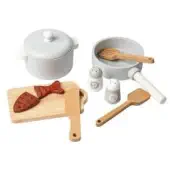
NEDBANK NAMIBIA · ACCOUNT NO. 11990522989 · BRANCH CODE 461-038 · SWIFT CODE NEDSNANX





So,
if
real
life
can
be
practiced
in
the
classroom,
can
Practical
Life
also
be
practiced
at
home?
Most
definitely.
With
a
little
bit
of
time,
patience,
and
appropriate
child-friendly
tools,
there
are many ways your little one can play a role around the home.
Practical Life Activities develop skills like:
· motor control and coordination · independence · concentration · self-confidence ·
· a sense of responsibility ·
Children
are
naturally
interested
in
learning
activities
they
have
witnessed
before.
Some
examples
are
washing
their
hands,
sweeping
the
floor,
or
wiping
the
table.
They
also
like
to
learn
about
everyday
routines
like
food
preparation
or
dressing.
It
is
empowering
for
little
ones
to
master
´practical
life´
activities.
Everything
you
teach
your
toddler
now
will
help
them
to
grow
into
a
self-sufficient
and
confident
adult.
Plus,
it
makes
your
everyday
lives
run
more
smoothly.
Keep it real
:
Wash
dirty
dishes
with
real
soapy
water
and
cut
fruit
with
a
real
knife.
Teach
about
knife
safety
and hygiene. Example: place the knife flat on the surface, tip pointing away.
Safety:
While
materials
need
to
be
functional
(a
knife
that
is
sharp
enough
to
cut),
the
priority
is
safety. Sharp objects need to have rounded ends and corners that are sharp should be covered.
Self-Contained:
The
adult
in
the
environment
is
responsible
to
make
sure
the
activity
is
prepared
with
everything
the
child
will
need
for
successful
completion
of
the
activity.
By
seeing
the
order,
the
child internalizes it.
Location of Materials:
Materials
should
be
easily
accessible
to
the
child.
For
example,
all
plates,
bowls
and
cups
should
be
stored
in
an
area
that
the
child
can
easily
access.
Places
like
a
bottom
drawer,
small
cupboard or low shelf are great.
Child-Sized:
Materials
must
be
proportional
to
the
child.
There
are
many
child-sized
brooms
and
dustpans
and stainless-steel cutlery on the market.
Sequential and orderly:
Each activity has a beginning, middle and end. Lay materials out in order, from left to right.
Natural Materials:
Natural
materials
offer
more
opportunities
for
multi-sensorial
experiences.
For
example,
using
a
wooden chopping board and cooking utensils.
Be a part of the process:
This
helps
the
child
to
learn
that
they
must
wait,
and
life
is
not
always
about
immediate
gratification. Things require preparation.







































